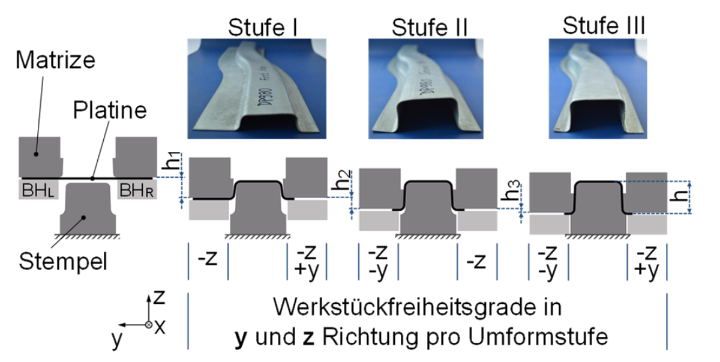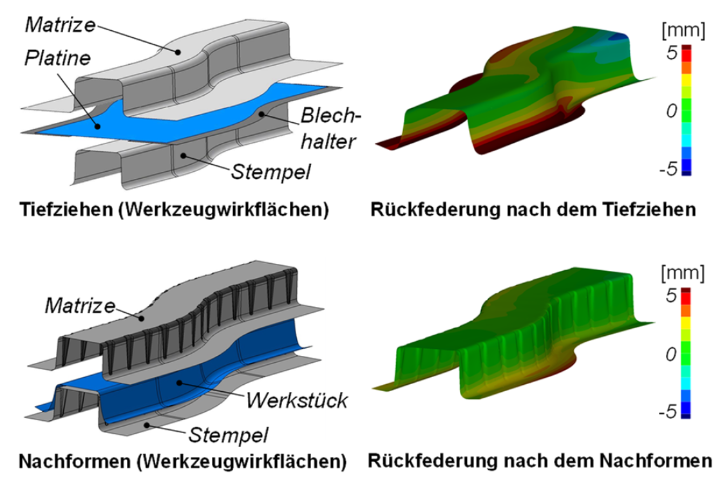The projects in this research area are concerned with the development of new methods and measures to compensate for the springback effects that occur during the deep drawing of high-strength sheet metal materials. While the current research landscape mainly investigates and further develops hot forming processes such as press hardening to compensate for springback in high-strength sheet metal materials, the IFU's work focuses primarily on solutions for the cold forming of such materials.
Concept of deep drawing with alternately controllable blank infeed
The aim of this research project is to develop a technologically sound method for the stress-based compensation of springback in the production of beam-shaped reinforcement components made of high-strength sheet steel materials. In order to achieve this goal, the approach of deep drawing with alternately controllable blank infeed is initially investigated. In contrast to conventional deep drawing, in which the two blank edges are drawn in evenly, there is a direction-changing relative movement between the punch and the workpiece in the punch radius and base contact area. This results in multiple bending of the workpiece in the aforementioned contact areas, which has the advantage that the tensile and compressive stresses occurring in the sheet thickness direction are superimposed with the stresses of opposite signs. This significantly reduces the stress difference between the inner and outer component fibers. This reduced stress difference over the sheet thickness should lead to a smaller or almost negligible springback. In order to further reduce any remaining shape deviations in the area of the component frame after deep drawing with alternately controllable blank infeed, the approaches of additional stretch forming of the component frame or pressing back of the component base are investigated.
Duration: 04.2018 - 03.2020
Reduction of springback with the aid of a postforming operation
The aim of the research project is to develop a methodology for the successful reduction or compensation of springback after the forming of high-strength sheet steel materials by postforming. The development of the new methodology is being investigated using the example of a double-curved U-channel geometry for which a drawing tool has been constructed. Based on the stress state before and after the unloading phase, appropriate geometric measures were defined on the component, which can be implemented by means of a postforming operation. Extensive simulations were carried out to analyze the effects of the various springback compensation measures. In order to achieve the most accurate springback prediction possible through improved simulation calculations, the new methodology works with extended material modeling. Finally, it was determined which geometric modifications should be applied by means of a postforming operation in order to successfully minimize the component shape deviations that occur after deep drawing (in particular angular change and frame curvature).
Duration: 07.2015 - 12.2017



